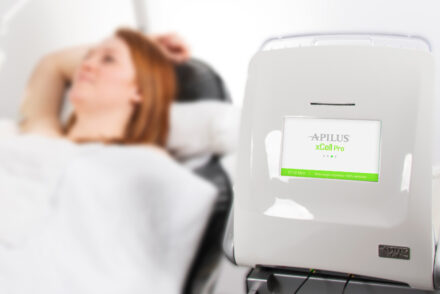It’s a fact, we don’t know very much about our body hair. Probably in part because its growth occurs slowly, and that it falls without us noticing, except, that is, when we take a peek at our shower drain! Such ignorance makes for a certain amount of misconceptions about hair that we should dispel, if only to help us choose what type of epilation procedure is right for us. Let us first get rid of the notion that hair grows… and “re-grows”, once cut or shaven. Hair will only resume its natural growth, and will fall eventually, before being replaced by a brand new hair. But then, how does that happen, exactly?
How Hair is Made
Do you believe in life after death? It is a fact that hair does indeed “resurrect”, and in an autonomous and cyclical fashion, to boot. How so, you ask? This perpetual (and surprising!) rebirth occurs thanks to the presence of stem cells, coming out from the bulge, located under the sebaceous gland. Those cells go down the outer root sheath, and into the hair matrix, at the bottom of the follicle. There, subjected to stimuli from the dermal papilla, they receive the genetic information which will allow them to obtain their specific place and role in the architecture of the hair. As the cells multiply, they progress upwards, dry out and die. This creates the hard and dense material from which the hair is made. This is how, when we cut or pull out hair, subsequent growth is not affected.
Hair Removal Solutions
Permanent solutions therefore involve targeting the bulge and dermal papilla, respectively the provider of raw materials, and the “hair factory”. Many will turn to IPL or laser for their high efficiency, as they can treat large zones quickly. They cannot stop completely the regenration process, but only weaken it. This is why we rather speak of permanent reduction of hair, and not permanent elimination, which only electrolysis can provide. Indeed, only the former can target with sufficient accuracy and intensity the zones responsible for hair growth. And thanks to recent technological improvements, principally the use of the 27,12 MHz frequency, this can be done without affecting surrounding tissue, which results in higher efficiency and comfort.







No Comments